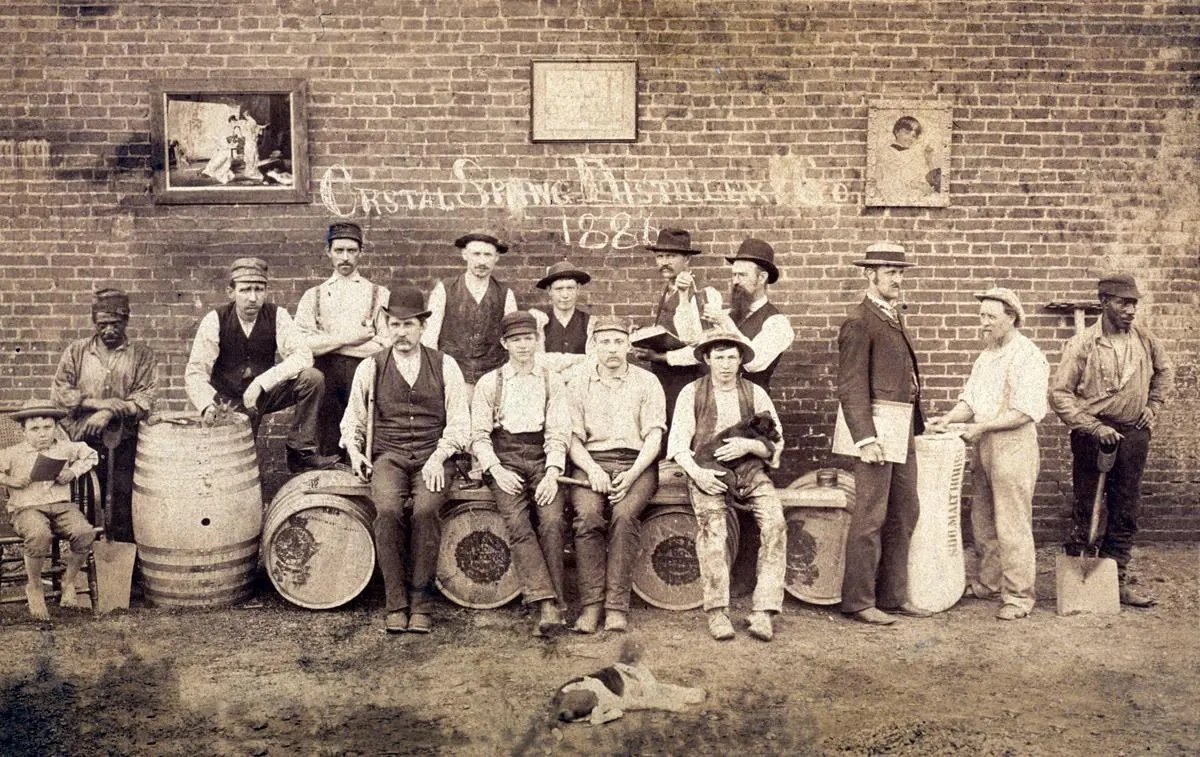The Distillery, the last of the New England rum factories
The building known today as The Distillery has a life that spans 160 years of Boston history. While it changed names and owners along the way, it was an active factory for alcoholic beverages until 1982 when the last barrel of rum rolled out of its doors.
History of The Distillery
The large brick factory building that sits between East 1st and 2nd Street in South Boston was first constructed in the 1860s as the Bay State Brewery and Malt House for the production of beer. A brewer named Henry Souther purchased the land from the Sound Boston Association, seeing it as well located beside the water for the delivery of barley from Canada. At the time, the harbor came right up to the property edge, before Boston’s aggressive filling of the coastal flats dramatically changed the Boston shoreline. Breweries were plentiful in Boston at the time – in 1890 there were as many as 27 beer producers in the city.
It wasn’t long before the Bay State Brewery was sold to a railroad magnate and Congressman from New Hampshire named Frank Jones. “Stories are told of his great physical strength... and nobody that can help it gets into a row with him,” an 1891 article in the Boston Daily Globe wrote of Jones.
But Jones’ grip also came to an end, and in 1905 the property was ready to change hands again, this time to the Felton family of Newton, Massachusetts. The Feltons had arrived in the Massachusetts Bay Colony in 1640, already with a background in ale brewing. In Boston they took up rum distilling under the names of Crystal Spring Rum and Pilgrim Rum. After purchasing the Bay State Brewery, it took the Feltons a year to reconfigure the facility as a rum distillery, a process that involved the installation of two dozen 10,000-gallon fermenting vats. The Felton & Sons Distillery patiently stayed in business through the years of Prohibition, and it’s said that their methods were so advanced, students from MIT and other schools made visits to study the well-refined production process.
The waterfront of South Boston was changing culturally but also physically. Boston had become obsessed with filling in its coastline to create more land, as it had done in the Back Bay and South End. Starting in the 1880s, the South Boston Flats started to become “wharfed out,” changing the shoreline and subsuming Castle Island into the mainland. As fill projects moved through South Boston, some of the enterprises on 1st Street protested and the city yielded, thus leaving the seemingly odd inlet known as the Reserved Channel that today is bordered by Pappas Way and is populated by a small marina and the occasional canoe polo player.
East 1st St. by the mid-seventies had lost most of its industrial activity, and the Felton & Sons Distillery (again under new management) was one of the few remaining active factories there. It was also the only remaining plant in New England where rum was distilled. But rising prices of molasses and changing tastes meant that by the fall of 1982, workers at the factory signed their names on the final barrel of rum to be produced at Felton’s.
In 1984, another Frederick (Frederick Gordon, who, like the original Feltons, would later come to live in Newton) purchased the property with its skeletons of disused machinery, molasses streaked walls, and malodorous scents. The rough neighborhood and the curious layout of the 100,000 square foot factory, with spaces ranging from shoebox to gymnasium-sized, was a curious real estate puzzle. It was artists who naturally gravitated toward the atypical labyrinth, and word got around. By 2003, The Distillery, as it was now being called, was zoned as one of Boston’s few artist live/work facilities and was host to a dedicated gallery and yearly open studios.
Today, The Distillery houses 150 artists, artisans, and craftspeople, including fine art and commercial photographers, painters, sculptors, drapers, and the occasional physical therapy studio. The Distillery Gallery has revolving art exhibitions and openings throughout the year, and is open to the public.
To learn more about The Distillery arts community or to inquire about rental space, visit: thedistilleryarts.com.


